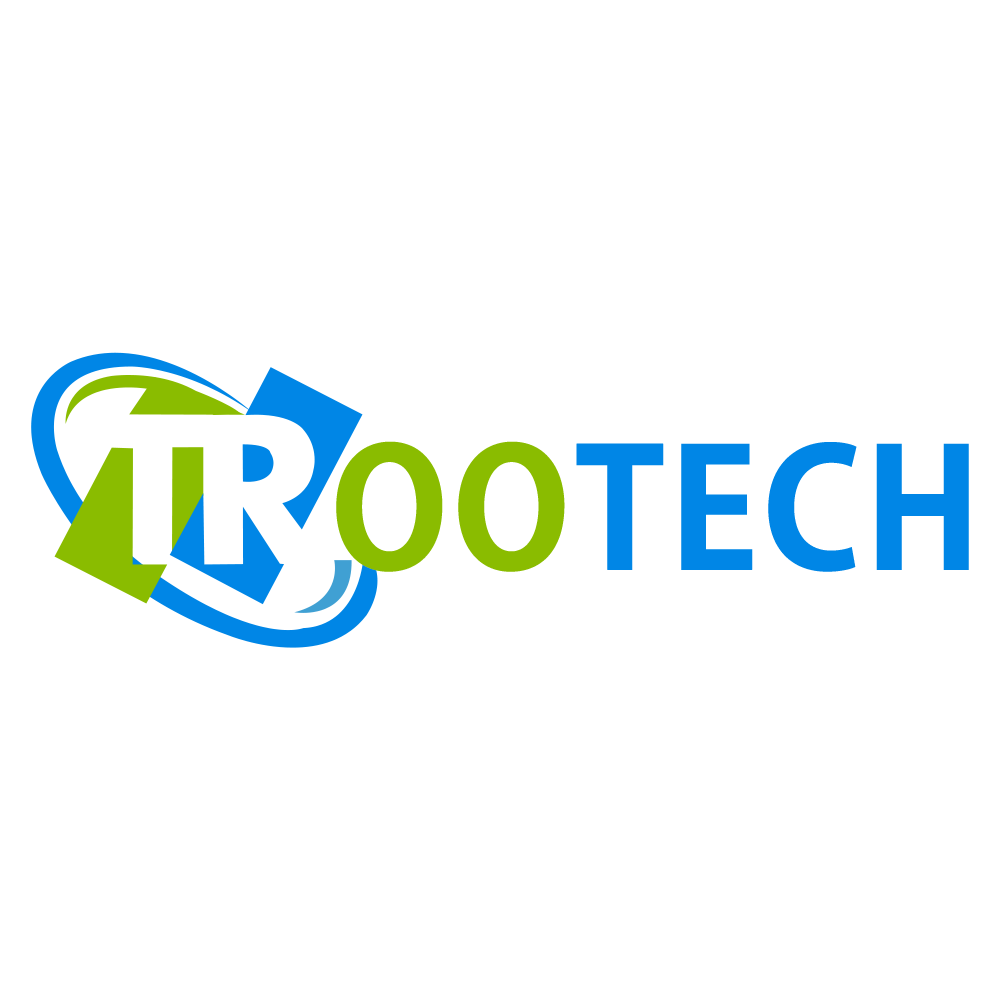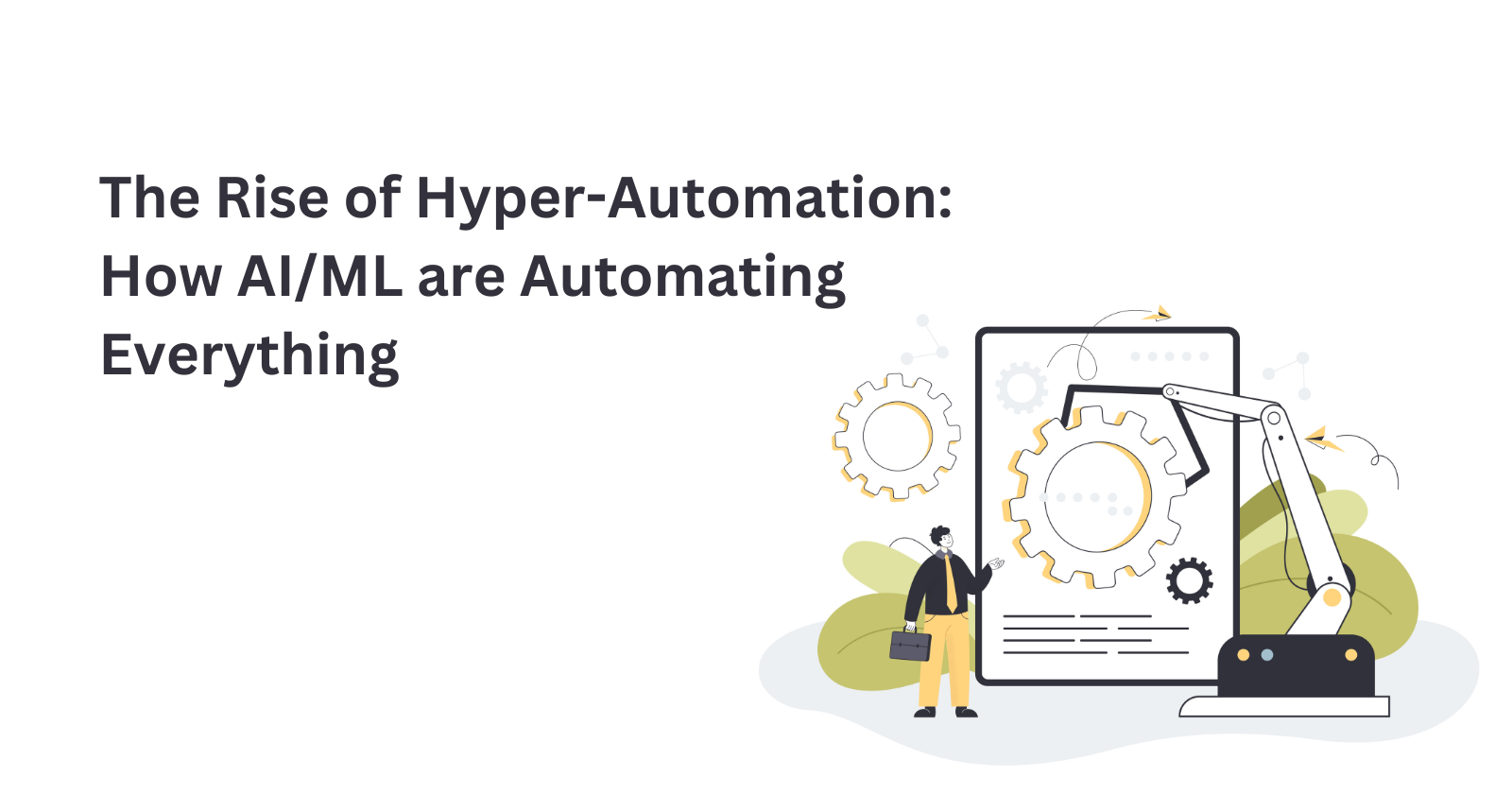The Rise of Hyper-Automation: How AI and ML are Automating Everything
 TRooTech Business Solutions
TRooTech Business Solutions
Automation is the process of using technology to perform tasks that normally require human intervention, such as data entry, customer service, manufacturing, and more. Automation can help businesses to improve their efficiency, productivity, quality, and customer satisfaction, as well as to reduce their costs, errors, and risks.
However, automation is not a new concept, and it has been evolving over time, from simple mechanical devices to complex software systems. The latest trend in automation is hyper-automation, which is the application of artificial intelligence (AI) and machine learning (ML) to automate not only repetitive and rule-based tasks, but also complex and cognitive tasks, such as decision making, problem solving, natural language processing, computer vision, and more.
Hyper-automation is also known as intelligent automation, digital process automation, or cognitive automation. It is one of the top strategic technology trends for 2020 and beyond, according to Gartner. Hyper-automation can enable businesses to achieve higher levels of automation, innovation, and transformation, as well as to create new sources of value and competitive advantage.
In this article, we will explore what is hyper-automation, how AI/ML are enabling hyper-automation, and what are the benefits and challenges of hyper-automation for businesses.
What is Hyper-Automation?
Hyper-automation is the combination of multiple technologies, such as AI, ML, robotic process automation (RPA), business process management (BPM), chatbots, digital assistants, and more, to automate end-to-end business processes and workflows, across various domains, functions, and industries.
Hyper-automation is not just about automating individual tasks, but about orchestrating and integrating multiple technologies and systems, to create a holistic and seamless automation solution, that can handle complex and dynamic scenarios, and that can learn and improve over time, based on data and feedback.
Hyper-automation is also not just about replacing human workers, but about augmenting and empowering them, by providing them with intelligent tools and insights, that can enhance their capabilities, performance, and experience.
Hyper-automation is a continuous and iterative process, that involves four main steps:
Discover: Identify and analyze the business processes and workflows that can be automated, and prioritize them based on their feasibility, impact, and value.
Analyze: Design and model the automation solution, and define the roles, rules, and metrics for the automation process.
Automate: Implement and deploy the automation solution, using the appropriate technologies and tools, such as AI, ML, RPA, BPM, chatbots, etc.
Monitor: Monitor and measure the performance and outcomes of the automation solution, and collect data and feedback for further improvement and optimization.
How AI/ML are Enabling Hyper-Automation
AI/ML are the key technologies that enable hyper-automation, as they provide the intelligence and learning capabilities that can automate complex and cognitive tasks that normally require human intelligence, such as reasoning, decision making, natural language processing, computer vision, and more.
AI/ML development can also help to discover, analyze, automate, and monitor the automation process, by providing various features and functions, such as:
Process mining: AI/ML development can help to discover and map the existing business processes and workflows, by analyzing the data and logs from various sources, such as databases, applications, sensors, etc. Process mining can help to identify the bottlenecks, inefficiencies, and opportunities for automation, as well as to benchmark and optimize the processes.
Data extraction and validation: AI/ML development can help to extract and validate the data and information from various sources and formats, such as documents, images, emails, voice, etc., using natural language processing, computer vision, optical character recognition, speech recognition, etc. Data extraction and validation can help to automate the data entry and verification tasks, as well as to ensure the accuracy and quality of the data.
Data analysis and prediction: AI ML development can help to analyze and predict the data and information, using various techniques, such as statistics, data mining, machine learning, deep learning, etc. Data analysis and prediction can help to automate the data processing and reporting tasks, as well as to provide insights and recommendations for decision making and problem solving.
Conversational AI: AI and ML can help to create and manage conversational interfaces, such as chatbots and digital assistants, that can interact with humans and other systems, using natural language, voice, text, etc. Conversational AI can help to automate the customer service and support tasks, as well as to provide personalized and engaging experiences.
Sentiment analysis: AI and ML can help to analyze and understand the emotions and opinions of the customers and employees, using natural language processing, text analysis, etc. Sentiment analysis can help to automate the feedback and review tasks, as well as to improve the customer and employee satisfaction and loyalty.
What are the Benefits and Challenges of Hyper-Automation for Businesses?
Hyper-automation can provide various benefits for businesses, such as:
Increased efficiency and productivity: Hyper-automation can help to reduce the time and resources required to perform the business processes and workflows, by automating the manual, repetitive, and tedious tasks, and by optimizing the performance and quality of the processes.
Reduced costs and risks: Hyper-automation can help to save the costs and risks associated with the human errors, mistakes, and frauds, by automating the complex, error-prone, and sensitive tasks, and by ensuring the compliance and security of the processes.
Improved customer and employee experience: Hyper-automation can help to enhance the customer and employee experience, by automating the customer service and support tasks, by providing personalized and tailored services and products, and by empowering and engaging the customers and employees with intelligent tools and insights.
Innovation and transformation: Hyper-automation can help to create new sources of value and competitive advantage, by automating the innovation and transformation tasks, by generating new ideas and opportunities, and by enabling new business models and strategies.
However, hyper-automation also poses some challenges for businesses, such as:
Complexity and integration: Hyper-automation requires the integration and orchestration of multiple technologies and systems, which can be complex and challenging, especially for legacy and heterogeneous environments. Hyper-automation also requires the alignment and collaboration of various stakeholders, such as business, IT, and users, which can be difficult and time-consuming.
Skills and talent: Hyper-automation requires the skills and talent to design, implement, and manage the automation solution, using various technologies and tools, such as AI, ML, RPA, BPM, chatbots, etc. Hyper-automation also requires the skills and talent to adapt and learn from the automation solution, and to perform the tasks that cannot be automated, such as creativity, empathy, and judgment.
Ethics and trust: Hyper-automation raises some ethical and trust issues, such as the impact of automation on the human workforce, the accountability and transparency of the automation decisions and actions, the privacy and security of the data and information, and the bias and fairness of the automation outcomes.
Conclusion:
Hyper-automation is the next level of automation, that leverages AI and ML to automate not only repetitive and rule-based tasks, but also complex and cognitive tasks, across various domains, functions, and industries. Hyper-automation can provide various benefits for businesses, such as increased efficiency, reduced costs, improved experience, and innovation. However, hyper-automation also poses some challenges for businesses, such as complexity, skills, and ethics.
Subscribe to my newsletter
Read articles from TRooTech Business Solutions directly inside your inbox. Subscribe to the newsletter, and don't miss out.
Written by

TRooTech Business Solutions
TRooTech Business Solutions
TRooTech Business Solutions is the hub of 400+ tech minds available with the best custom software development solution for all your business requirements. With the aim to provide the most suitable and innovative technical solutions, we follow the latest technological trends and use the technology for all technical requirements. Our expertise in Machine Learning, Blockchain technology, IoT, AR/VR, Automation, and many more empowers us to deliver exceptional technological solutions.